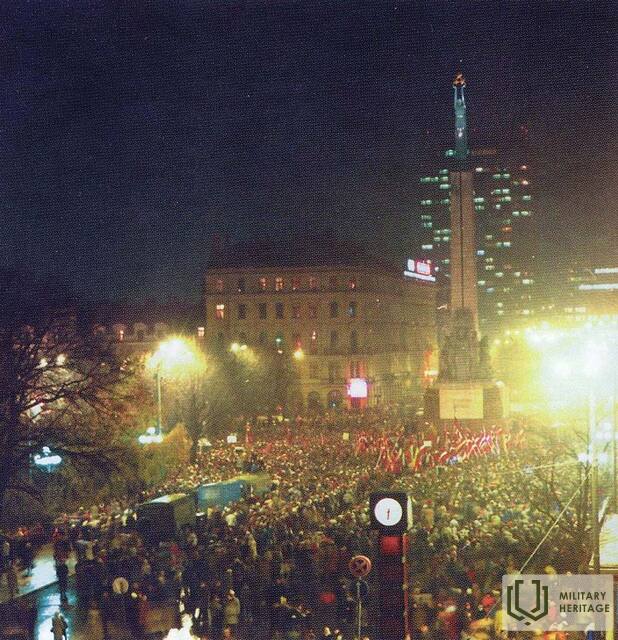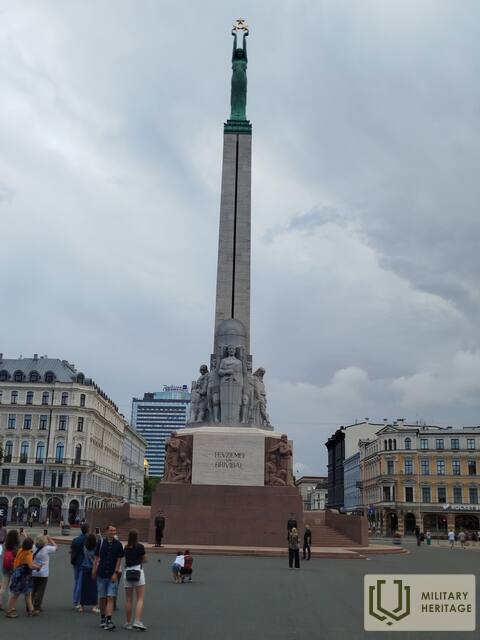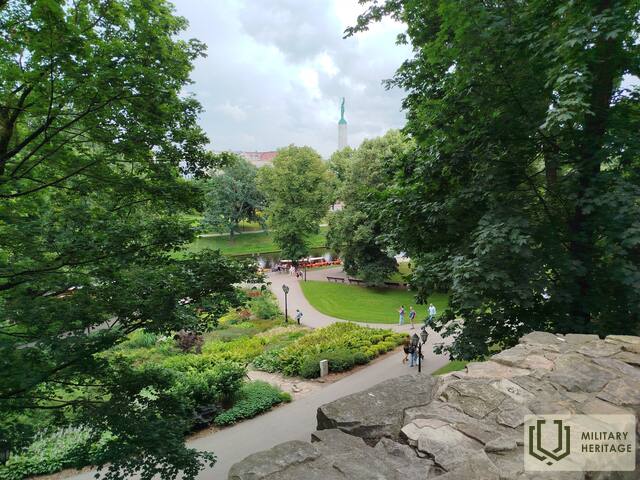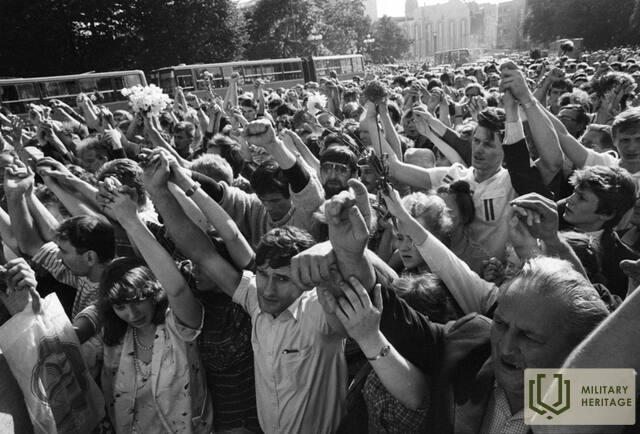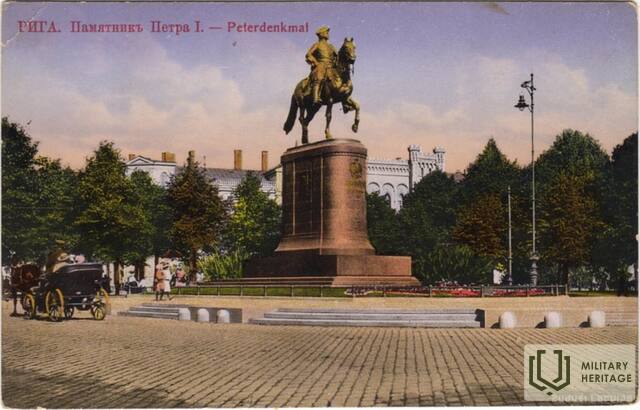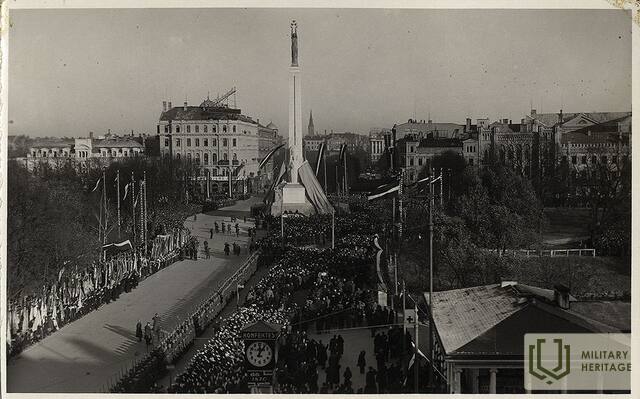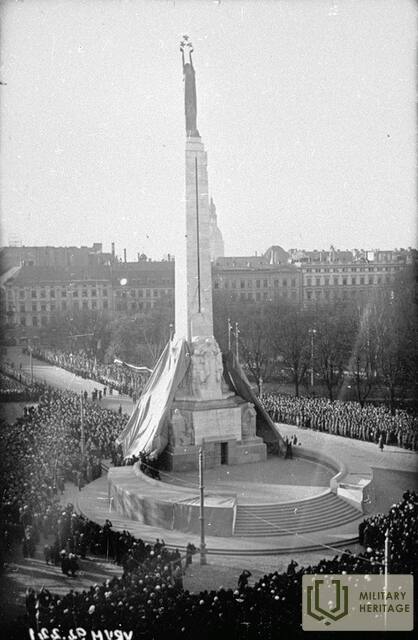Freedom Monument in Riga Memorial site

The Freedom Monument was one of the central symbolic points of the Awakening events. On June 14, 1987, the human rights group Helsinki-86 organized an unauthorized public flower-laying ceremony at the Freedom Monument. Two months later, on August 23, Helsinki-86 called for a rally at the Freedom Monument on the 48th anniversary of the Hitler-Stalin Pact of August 23, 1939. During this rally, Soviet police beat and arrested demonstrators. In the following years, flower-laying ceremonies at the Freedom Monument became a part of all major demonstrations and other mass events .
Located in the center of Riga, on Freedom Square.
The Freedom Monument is one of the most outstanding monuments of Latvian history, architecture and art. Built according to the project of Kārlis Zāle with public donations. It was unveiled in 1935 as a symbol of the Latvian people's freedom and love of their homeland. Together with the Riga Brothers' Cemetery ensemble, it belongs to the most valuable examples of monumental architecture and sculpture.
The Freedom Monument expresses the ethical and aesthetic values of Latvian culture. The symbols reflect the philosophical essence of freedom and the historical ideas of the Latvian nation about the stages of the struggle for independence. They point to the embodiment of physical and spiritual strength. The heroic language tells the story of the Latvian people as self-reliant, active creators of history and the determinants of their own destiny.
In its place, there was originally a monument to Russian Tsar Peter I. During World War I, it was dismantled to be transported by ship to Petrograd. The ship was torpedoed by a German submarine, and it sank off the Estonian island of Vormsi. The Soviet occupation regime planned to demolish the Freedom Monument several times, but this did not happen.
Today, you can see one of the symbols of Latvia and observe the traditions of the army honor guard.
A tactile Freedom Monument has been created on the canal bank, next to the Freedom Monument. This special bronze miniature was created by sculptor Ivars Miķelsons on a scale of 1:50.
Used sources and references:
https://www.la.lv/diena-kas-aizsaka-atmodo
Apsītis, V. Freedom Monument. Riga: Zinātne, 1993.
Related timeline
Related topics
Related stories
The fate of the Freedom Monument during the Soviet era
During the Soviet occupation, the Soviet authorities wanted to dismantle the Freedom Monument, but legend has it that Soviet sculptor Vera Mukhina advocated for the preservation of the monument, emphasizing its artistic and emotional value to the Latvian people.
Rauna Freedom Monument or Monument to the memory of the members of the Rauna parish who fell in the First World War and the Freedom Struggles
The origins of the idea for the Rauna Freedom Monument can be traced back to August 21, 1929, when the mayor of Cēsis and the head of Cēsis district invited the most prominent public figures of Rauna parish to a meeting, inviting them to honor the achievement of freedom and build a monument in Rauna.
Karlis Hall and Freedom Monument
The narrator describes the memories of Kārlis Zāles as a personality who created the most famous works of Latvian art. The description is dedicated to the memory of Zāles in 1942 (the year of K. Zāles' death). The memories were chosen to characterize K. Zāles' works based on the author's personal characteristics and perception of the world.
About the lesser-known works of Latvian sculptor Kārlis Zāles in the old cemeteries of Dīvala and Trikāta
One of the little-known works of sculptor Kārlis Zāle (1888-1942) is the travertine sculpture "Fallen Roses", created between 1939 and 1940, and associated with the creation of the Brothers' Cemetery ensemble.




